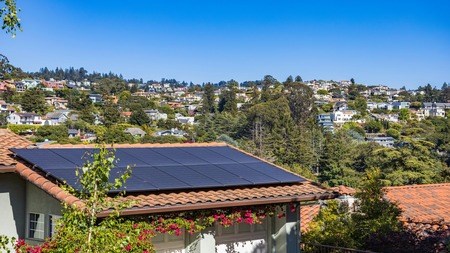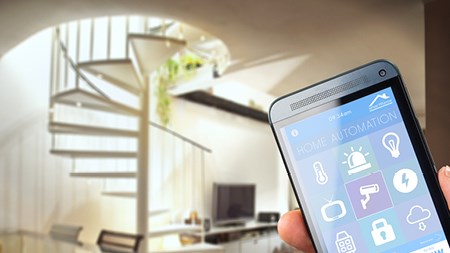Eskom’s ageing infrastructure challenges have again impacted homes and businesses negatively. The most recent load shedding regime, which brought three daily power switch offs of 2,5 hours each, saw productivity decrease and the day-to-day lives of South Africans disrupted.
Portia Letlape, Product Portfolio Manager of ECM and Rewards at Absa Home Loans Absa, says that this has increased interest in alternative energy sources, which is crucial to sustaining and rebuilding the country’s economic base.
“The most cost-effective solution for domestic homes is an Uninterrupted Power Supply (UPS), also known as an inverter. At its most basic, it literally ‘keeps the lights on’ and allows a number of devices to remain operational. Essentially, a UPS is an energy storage system used when there are power outages. It’s not designed to save on energy costs, nor does the basic solution have the option of adding solar panels, but it is relatively inexpensive if the goal is purely to remain productive during energy crisis times.”
Letlape explains that a UPS is a plug-and-play concept and is pre-assembled on purchase from many local retailers. “It does what it says: simply plug the inverter into one plug socket, which transfers electricity to the UPS where it is stored. During a power outage, an extension cord, with the addition of a multi-plug, is plugged into the UPS to allow much-needed appliances to be run. There is, however, a limit to the number of devices that can be run through this system.”
That is the simple, most cost-effective interpretation of a UPS; there is a more expensive and expansive offering, which requires fitment by an accredited installer. Such an installer considers the household consumption requirements to match the right sized inverter for your needs. A bigger UPS can be upgraded, unlike the basic plug-and-play, and can also include the addition of solar panels, which then starts to realise electricity cost savings. “The installer can also connect this solution to the main electricity board (DB) to power pre-determined electrical points or plugs, such as lights,” says Letlape.
Understanding UPS components
The inverter
A UPS comprises an inverter and a battery/ies. As already mentioned, the inverter receives electricity from a power source known as Direct Current (DC). Then, it converts it into Alternating Current (AC) that appliances in the home can use. The inverter regulates the electricity it receives when drawing from the grid and kicks in within milliseconds of a power interruption.
The bigger the inverter, the more devices can be used. “Usage of an inverter is not really about how much time you can have power, but how much power can be transferred through the inverter,” explains Letlape. “If you have more appliances attached to the inverter than can be handled by it, it will trip, requiring the unplugging of some of those.
The battery
The battery is the storage unit from which power is withdrawn during an outage. Varying numbers of batteries and capacity thereof determine the amount of time and number of devices that can be used during a power interruption. “It is obvious, therefore, that the larger the battery, the more power it can store and supply the household with energy when needed,” says Letlape
There are many different battery technologies available, such as lead-acid, lithium-ion (with many different sub-types), sodium-sulphur and vanadium-redox.
These different technologies each have their own key strengths, weaknesses and performance characteristics. Such characteristics include depth of discharge, power output, weight, energy density, response time, safety and thermal performance.
For example, Lead Acid batteries, made using lead, have a lower density than Lithium-Ion, made from metal lithium. One of the most significant differences between the two is that Lead Acid batteries have lower density meaning they require more capacity to store energy. “They are also less energy-efficient, with roughly 50% of the energy stored used in a single cycle. An advantage is that they are more affordable than the Lithium-Ion batteries and ideal for the plug-and-play scenarios.”
Lithium-Ion batteries store more energy and have a far better energy efficiency; “95% of the energy stored in them can be used, and the batteries charge faster,” says Letlape. “In most cases, Lithium-Ion battery technology is superior to Lead-Acid batteries due to its reliability and efficiency. However, in cases of small off-grid storage, the Lead Acid battery system is a better option.”
How to finance the UPS solution
With households already under financial strain, given the latest fuel crisis and other economic pressures, affordability is the question. Absa has the answer. “We have a number of ways for existing Absa home loan customers to consider for a UPS purchase.”
A Further Advance allows you to tap into the increased value of a property and register a further bond, which is paid out in cash. However, bond registration costs are applicable.
A Re Advance allows the client to access what has already been paid into the home loan account. Therefore, it does not require the registration of a further bond.
Flexi Reserve allows the homeowner to access any pre-paid funds available in the home loan account, such as when the client has paid more than their minimum instalment.
Switching is for customers who move a home loan account from another bank to Absa, which allows them to access the equity in the property.
Personal Loans and Credit Cards, bearing in mind that these carry an interest rate burden.
“With winter on its way and speculation that load shedding could increase to Stage 6, which could be catastrophic given it means four slots of no power with only one-hour intervals of full power, a plug-and-play UPS may not be sufficient in terms of its ability to fully recharge. For those working from home, the frustration of not being able to be productive is another factor that is increasing anxiety in homes,” says Letlape.
“Ensure you speak to a specialist who can interpret your power needs and provide you with a quote that suits your financial circumstances. Load shedding is going to be part of our future, and if we all want to remain productive and see a return to an improved economy, a UPS/Inverter is part of the solution to ensure this."




